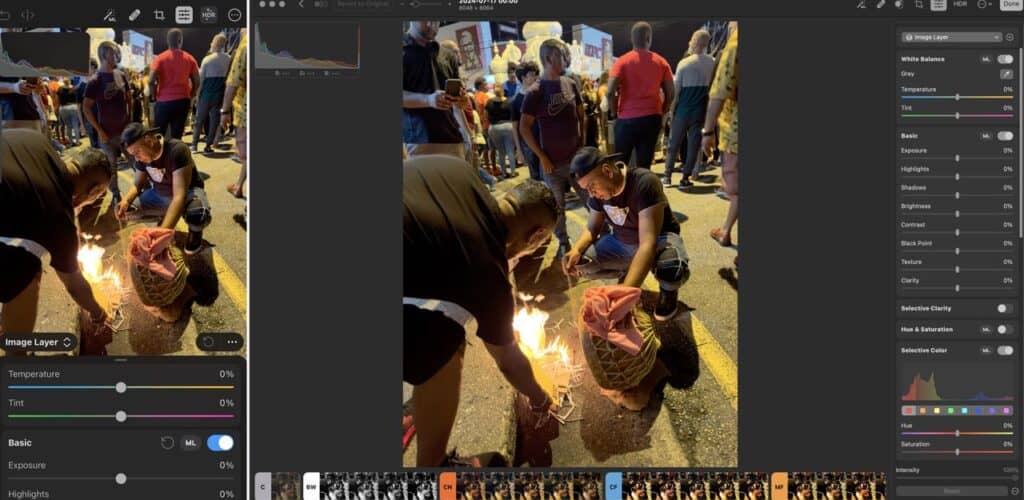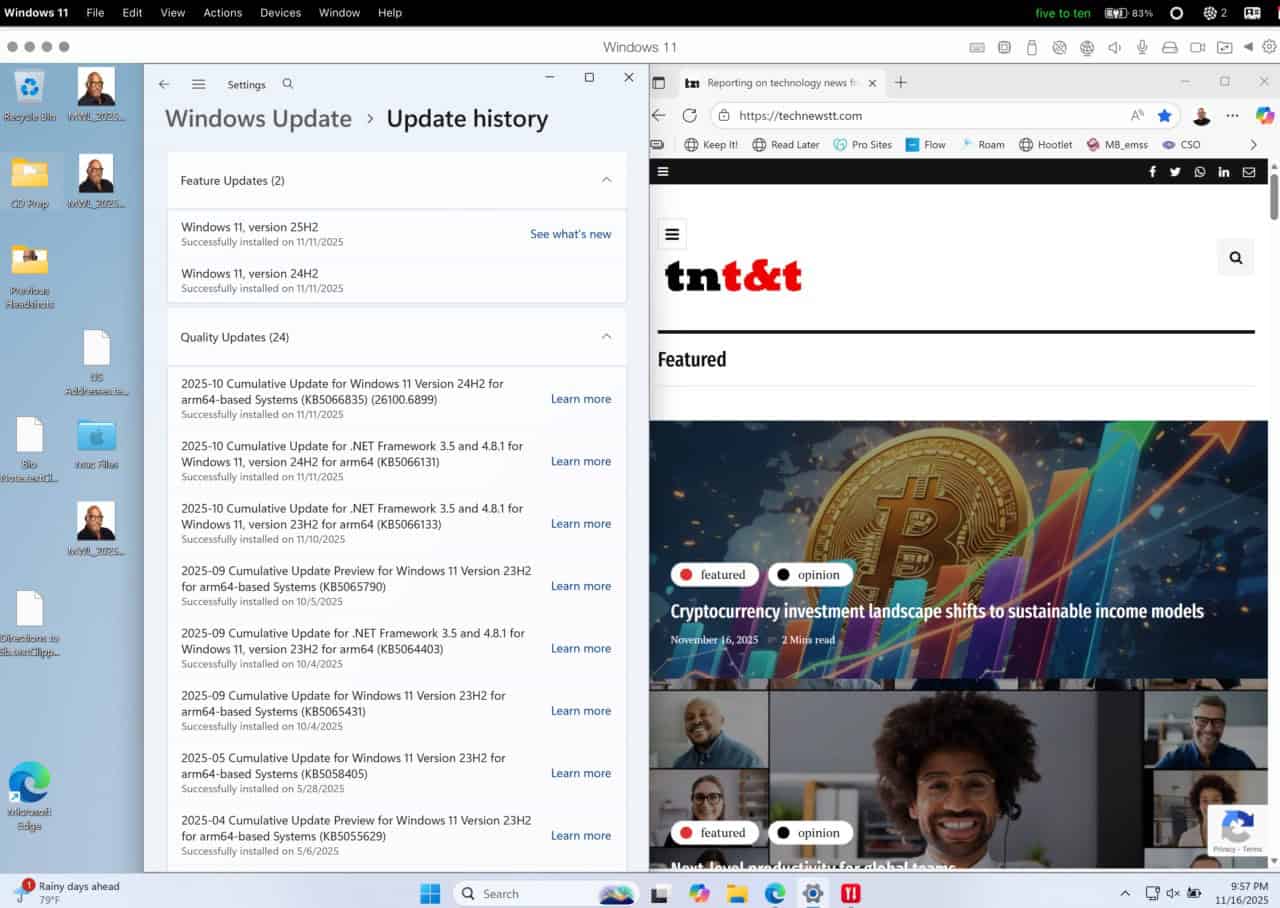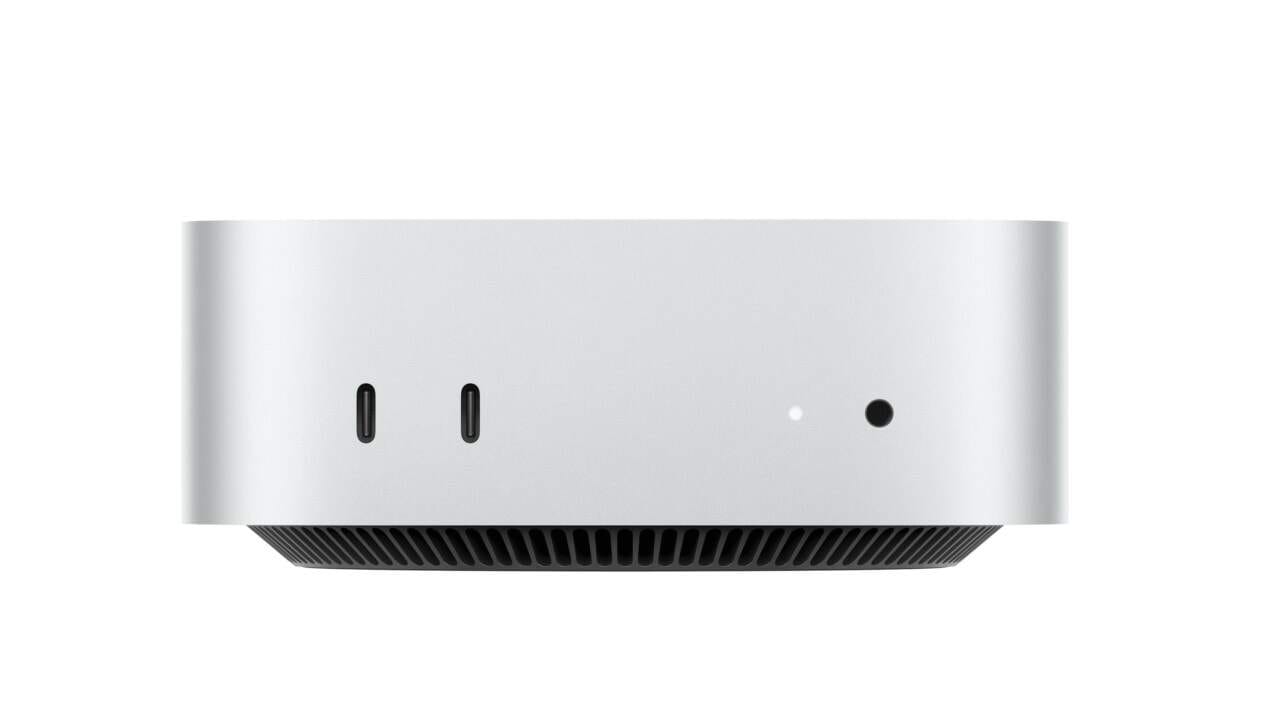
Above: Apple’s Photos in edit mode.
BitDepth#1468 for July 22, 2024
Until I’d committed to an all Apple workflow for my smartphone photos, how photos got managed under iOS was something of a mystery to me.
It’s been just shy of three decades since I switched to digital photography using MacOS, and I’d only used an early iPhone before switching to Android.
So I stayed with the desktop and folders metaphor for moving, managing and producing images.
There wasn’t much need to explore the arcana of Apple’s Photos app on the desktop beyond ordering the occasional print or booklet, so I managed to miss the more confusing twists and turns of the evolving image management system.
Adobe’s enthusiasm to alienate its most committed users and a new iPhone provided prompts to understand how pictures get managed in Apple’s workflow.
For most professional photographers, the software workflow runs from a browser for reviewing image collections, a parametric image editor to work on groups of images and apply metadata, then an image editor for tone and retouching adjustments.
Until recently, that couldn’t be done with the Photos database.
Every Apple device has one of these databases and every image that’s taken with a mobile iOS device or imported into the desktop Photos app gets added to it.
The database is replicated online, and each Apple device owner gets 5GB of space on its iCloud servers. But online backups, shared documents and the Photos database fill that quickly.
The Photos database is not efficient, spawning duplicates in varying sizes while choosing to be quirky about which pictures end up on which device.
Take a photo with an iPhone or iPad and if you have iCloud sharing enabled on all your devices, the image gets synchronised to all available devices.
A photo added on a Mac laptop or desktop, for instance, doesn’t go anywhere until you explicitly place it in an album designated for sharing across multiple devices.
This befuddled me for weeks, because it seemed that anything I put into the database should be available to me on any other instance of the database, but, no, that’s just not how it works.
For a long time, there were no alternative tools for accessing the Photos database either.
Photos, the app that replaced iPhoto, is actually quite a capable image editor, adding some of the powerful image editing tools that were left behind after Apple abandoned its Lightroom rival Aperture.
While it is unquestionably the authoritative tool for managing photos in the database, it’s missing several tools that a professional photographer would expect.
There are multiple apps available to replace the Camera app, some offering a design refresh, some tapping into iPhone features that aren’t surfaced well in the Apple’s default image capture app, but after trying several of these apps, there wasn’t a compelling proposition, particularly at the prices demanded, for not using the built-in and free camera app.
Over the last year or so though, Apple appears to have made access to the database more openly available and several apps are now available that make a pro workflow and deeper interactions with the iPhone’s raw captures possible.
Some proved to be non-starters.
Photos Workbench from Houdah software, authors of the excellent Houdah Spot, is an attempt to bring rating and image management tools to bear on the Photos database. But its tools are deficient, don’t align with professional practice and the app is desktop only and slow.
On1 brought a capable version of its parametric image editor to iOS, but while it can read the Photos database, it only imports from and exports to it.
Radiant, which offers useful tools for image editing seemed like a good Photos replacement. It’s available in a subscription model, but you can own the app for US$50, which was costly for what it offered.
Pixelmator, creators of an excellent image editor for MacOS, introduced Photomator, an answer to the Lightroom-Photoshop synchronicity on the desktop, an alternative to Photos and a replacement for its abandoned version of Pixelmator for iOS.
It’s expensive at US$120 for an outright purchase (subscription versions are also offered) and you can try it for a week for free.
Photomator brings many photo editing tools from Pixelmator Pro to all Apple’s mobile devices. Buy it once and you can use it everywhere, even on the Vision Pro.
I use Pixelmator Pro quite a bit, and Photomator is an elegant merging of the concept of Photos with the power of a dedicated image editor.
Soon after Photomator’s debut, Gentlemen Coders, creators of the editing app RAW Power, brought those tools to its own Photos replacement, Nitro.
For now, Nitro (US$100) is the competitive king. It’s the closest anyone has come to delivering a full parametric image editor on iOS that works seamlessly with the Photos database, with image editing tools that surpass what’s available in Photos and excellent tagging tools that make culling workable within the database.
Nitro has the same metadata problems that plague the desktop imaging world. Adjustments made in one image editor on a RAW file don’t show up in another, so you can work on an image in Nitro only to look at the same photo in Photomator or Photos and see it untouched.
Some of these problems aren’t likely to ever be solved, given Apple’s attachment to private APIs, but there is a notable loosening of restrictions on a critical database that was once untouchable. That’s a good thing for iPhone photographers generally and anyone who wants to do more with their photos in the Apple ecosystem.







































